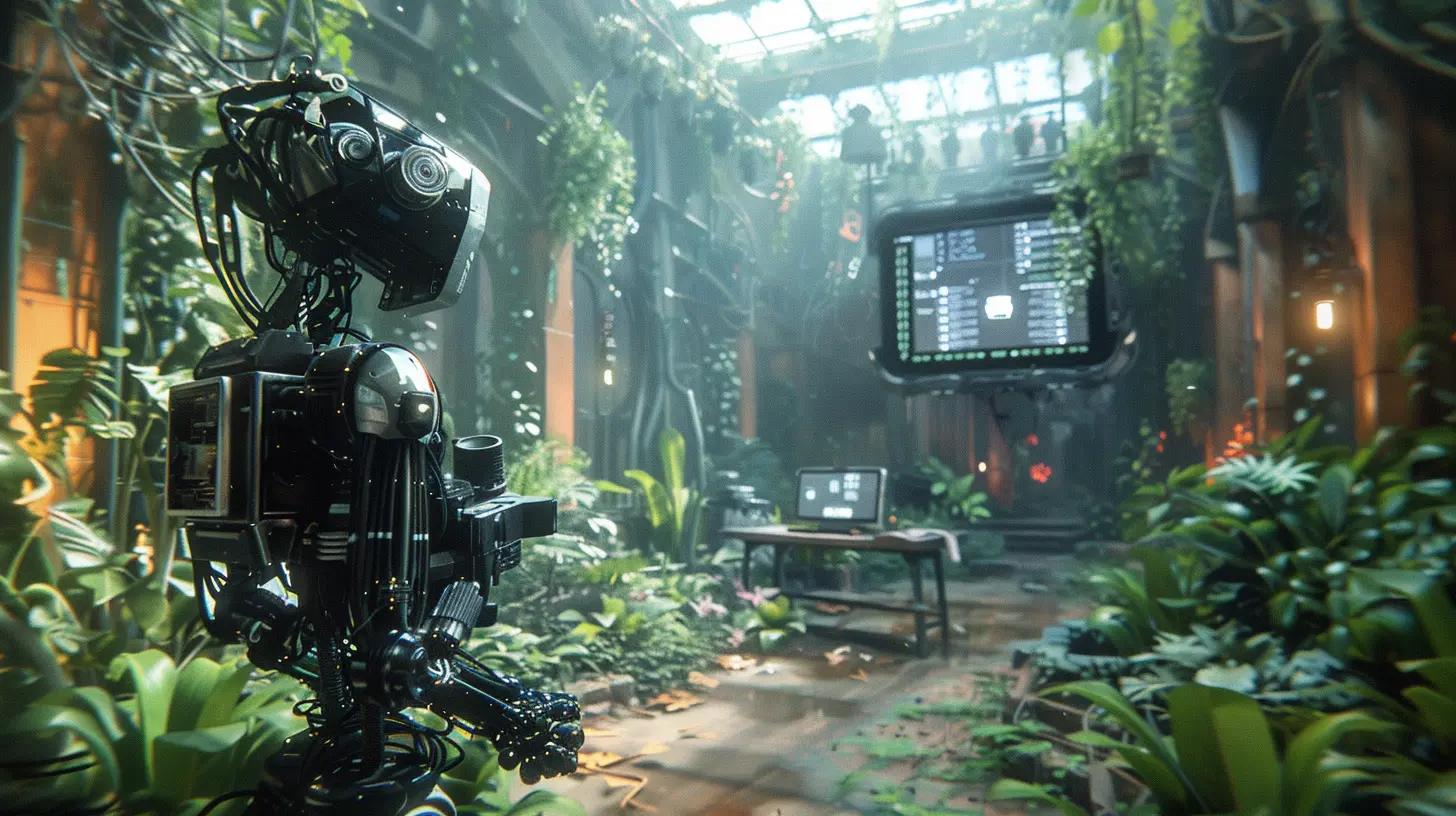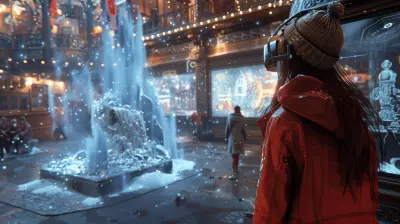Efficient AI Creation Tools within Unity
7 November 2025
Artificial Intelligence has changed the game—literally. Whether you're building an immersive RPG or designing NPCs that don’t walk into walls (we’ve all been there), having the right AI creation tools can be a total game-changer. And if you’re working in Unity—lucky you—there's a buffet of efficient, powerful options right at your fingertips.
So grab your favorite energy drink (or coffee if you're classy like that), and let’s dive deep into how Unity equips you with the tools to create smarter, smoother, and crazier AI for your games.

Why AI Matters in Game Development
Before we get into the actual tools, let’s talk about why AI is more important in game dev than ever before. It used to be enough to have an enemy who follows you around a corner. Now? Gamers expect enemies that learn, adapt, call for backup, or even fake you out with ambushes.AI is not just about shooting or chasing. It’s about:
- Creating believable characters
- Enhancing gameplay mechanics
- Building immersion
- Handling complex decision-making
Basically, great AI is the difference between a static world and one that feels alive.
Now—how do we build that in Unity?
Unity’s Built-In AI Systems: Your First Line of Code-Free Defense
Let’s start with what Unity gives you right out of the box, because it’s not too shabby.1. NavMesh (Navigation Mesh)
If you're tired of NPCs getting stuck on corners or walking straight into lava pits, then NavMesh is your new best friend.What It Is:
A system that helps agents (like enemies or NPCs) move intelligently through the game world.
Why It's Efficient:
- Fast and easy to bake navigation paths
- Handles dynamic environments (yep, it updates if a door closes)
- Works super well for terrain and 3D levels
- You can define walkable areas, obstacles, and off-mesh links (jump points, ladders, etc.)
Think of NavMesh as the Google Maps for your AI agents. It tells them where they can go without asking you every two seconds.
2. Animator + Behavior Tree Logic
Unity’s Animator isn’t just for character movement—add in some clever logic and you can simulate complex AI behavior.Use Cases:
- Patrolling guards
- Idle animations that react to player proximity
- Multi-state enemies (attack, flee, search, repeat)
You can even simulate emotional states (calm, alert, aggressive) by mixing animation layers with triggers. It gets deep, fast.
3. State Machines
You can build finite state machines (FSMs) right in Unity—no extra tools needed. They're the bread and butter for any AI that needs simple but effective behavior like:- Idle > Chase > Attack > Die
- Wander > Alert > Flee
FSMs are simple, scalable, and super easy to understand—a great starting point if you're just dipping your toes into AI.
Top AI Creation Tools and Plugins for Unity
Alright, the built-in stuff is solid. But what if you need more complexity? Smarter agents? Less spaghetti code? That’s where third-party tools come in.Here’s a list of the current MVPs (Most Valuable Plugins) when it comes to creating efficient AI in Unity.
1. NodeCanvas
If you want to create behavior trees, state machines, AND dialogue systems using visual scripting—NodeCanvas is your go-to.Why We Love It:
- Giant, easy-to-read visual graphs
- Behavior Trees and FSMs combined in one framework
- Debugging is buttery smooth
- Perfect for complex character logic
It’s like Trello for your AI’s brain, but with more laser beams and fewer post-it notes.
2. Rival AI
Rival AI is new on the scene, but it’s packed with performance-focused features for physics-based AI.What Makes It Special:
- Built on Unity’s DOTS system (super fast)
- Great for competitive or combat-heavy games
- Reactive movement + real-time decision making
If you’re making fast-paced action games or combat simulators, this tool can seriously turbocharge your AI.
3. Emerald AI
This one is tailor-made for devs working on RPGs or open-world games.What It Does:
- Simple drag-and-drop AI behavior setup
- Built-in combat, fleeing, and patrolling systems
- Works with melee and ranged enemies
- Includes voice, animations, and perception systems
The best part? You don’t need to write any code. This is a godsend for solo devs or teams with limited programming resources.
4. R.A.I.N. (Reactive AI Network)
RAIN is a hybrid AI engine that helps you build super-smart agents with layered decision-making.Why It Rocks:
- Great for stealth and tactical games
- Includes sensors, pathfinding, and memory systems
- Highly customizable decision trees
It’s like giving your AI a little black book of everything it’s ever seen or heard—and letting it make plans from there.
Custom AI with Unity: When You Wanna Get Fancy
Sometimes the off-the-shelf tools just don’t cut it. Maybe you’re building an RTS with squads that flank, or horror AI that plays mind games. Time to pop the hood and write some custom AI systems.1. Decision Trees
These are the “If this, then that” of AI logic. You can write them from scratch using scripts, then plug into events and triggers in Unity.Best For:
- NPCs with binary decisions
- Simple combat logic
- Branching quests
You can make your own system or expand Unity’s built-in logic. Either way, it gives you full control.
2. Utility-Based AI
This is where things get juicy. Utility AI assigns scores to possible actions and picks the one with the highest value.Example Scenario:
An enemy decides between:
- Attacking (score: 60)
- Retreating to cover (score: 80)
- Calling backup (score: 70)
So it flees. Smart, right?
Pro Tip: Pair this with machine learning models for even more adaptable AI.
3. Machine Learning with ML-Agents
Unity’s ML-Agents Toolkit lets you train AI using reinforcement learning—basically, trial and error at super speed.What You Can Do:
- Train agents to navigate mazes
- Teach enemies to predict player movement
- Create NPCs that adapt over time
It’s a steep learning curve, but the results are absolutely worth it.
Performance Tips for Efficient AI
Smarter AI means more calculations, which means more strain on your game. Here’s how you keep things running smooth:1. Use Coroutines
Don’t check everything every frame. Use coroutines to space out calculations, especially for large AI systems.2. LOD for AI
Level of Detail isn’t just for models. Reduce AI behavior checks for agents far from the player.3. Object Pooling
Avoid constant instantiation. Pool your AI agents and recycle them like a green game dev.4. Profiler is Your Friend
Use Unity’s Profiler tool regularly. If one AI decision is eating 30% of your CPU time, it’s time to optimize.Real-World Examples of Cool AI in Unity Games
Let’s take a break from theory and look at a few games that nailed it using Unity and smart AI planning.1. "The Forest"
Not only did the cannibals in this game scare the pants off us—they also learned from your actions. The more aggressive you were, the more cautious they became.Built using custom behavior trees and Unity’s NavMesh system.
2. "Subnautica"
Underwater creatures have complex threat detection and pathing AI. Unity’s NavMesh on dynamic terrain made this possible.3. "7 Days to Die"
Zombies sniff out weak walls instead of just walking straight at you. That’s some next-level pathfinding combined with utility AI.The Future of AI in Unity
Looking ahead, Unity is going all-in on AI. With the introduction of Unity Sentis (deep learning runtime), you might soon be throwing full-on neural networks into your projects—without leaving the editor.AI in games is going from scripted puppets to full-blown improvisers, and Unity is one of the best stages out there for this performance.
Wrapping It Up
Creating intelligent AI doesn’t mean you need a PhD in machine learning. Thanks to Unity’s powerful tools—from simple FSMs to full reinforcement learning—you can build AI that’s smarter, faster, and even a little unpredictable.Whether you're a solo dev on an indie project or part of a studio making the next hit game, Unity’s AI tools scale to your needs. And with more updates rolling out every year, things are only going to get better (and smarter).
So go ahead—build that enemy that finally takes cover, taunts the player, or just creeps everyone out.
Game on.
all images in this post were generated using AI tools
Category:
Game EnginesAuthor:

Avril McDowney
Discussion
rate this article
1 comments
Calder McLean
Great insights! Unity's AI tools really streamline the game development process. Can't wait to see how they evolve in future projects!
November 11, 2025 at 5:43 AM

Avril McDowney
Thank you! I'm glad you found the insights valuable. Unity's AI tools indeed promise to enhance the game development experience. Exciting times ahead!


